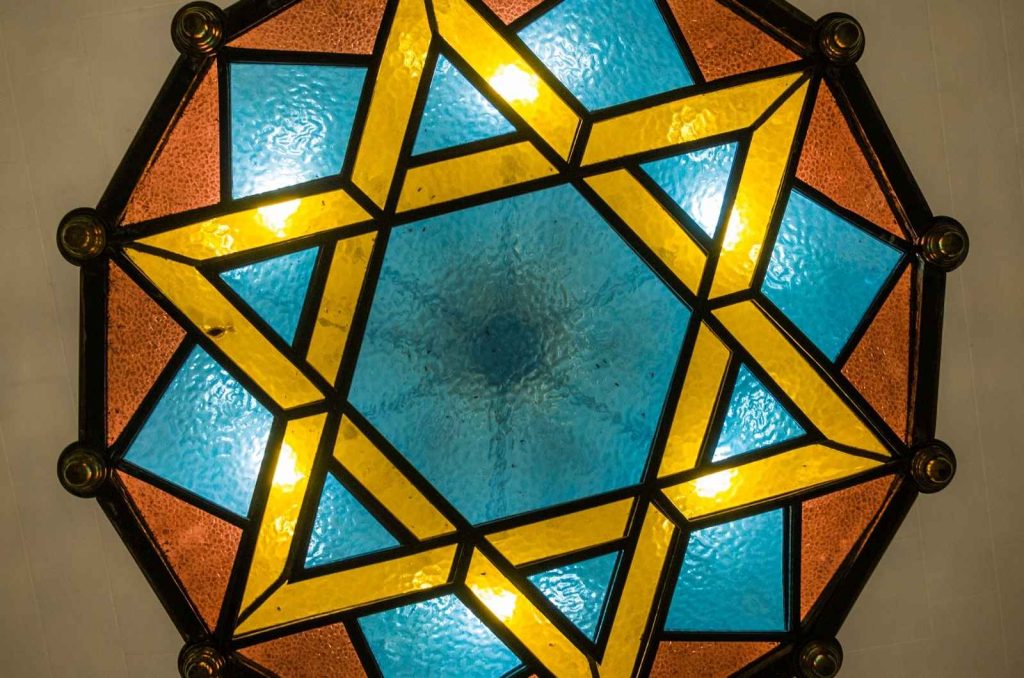
Art is a universal language that has the power to stir emotions, provoke thought, and awaken the soul. Within the Jewish culture, every stroke of a brush, every engraving, and every stitched thread tells a unique, meaningful story. But how much do we truly understand about Jewish sacred art?
Jewish sacred art has a rich history and features distinct symbols, connecting individuals to their faith in a profound way. It provides an inspiring landscape where the spiritual realm meets human creativity. This post not only explores the depths of Jewish sacred art but also delves into the symbols that are inherently powerful within its lexicon. We'll venture into the realms of divine connection fostered through art and ponder over the modern interpretations of religious expressions. Let us journey together into this beautiful world, where art and faith intertwine in the most enchanting ways.
Exploring Jewish Sacred Art
Jewish sacred art represents an important facet of Jewish culture and identity. Its roots trace back to ancient times, showcasing a rich tapestry of religious narratives, traditions and teachings. Jewish art has evolved over the centuries, with artists employing various mediums, from traditional paintbrushes and chisels to intricate textile patterns and innovative digital techniques, to express Judaism's spiritual nuances.
At its core, Jewish sacred art serves as a conduit connecting the physical and spiritual worlds. It engages with deeper human emotions and spiritual questions, providing a platform to explore Jewish narratives beyond their surface appearances. This exploration can instigate a stirring sensation within the soul, generating a personal connection with the divine. Later in this piece, we will delve into the symbolism behind Jewish art – a key element in understanding and appreciating its true power.
The Power of Jewish Symbols
In the intricate world of Jewish sacred art, symbols play a transformative role. They are not just decorative elements, but profound representations of Jewish culture, faith, and history. Often featured are iconic symbols like the Star of David, a six-pointed star signifying divine protection and the unity of heaven and earth, and the Menorah, a seven-branched candelabrum reflecting knowledge and creation.
Another emblematic symbol is the Hamsa, a hand-shaped talisman believed to ward off evil and bring good fortune. Its depiction in art pieces is common and is used to foster a sense of security and positivity within the beholder. Colors, shapes, and motifs are likewise instrumental in Jewish art, serving as symbolic language that goes beyond verbal expression. Each color and shape usually carries a specific connotation rooted in Jewish scripture and tradition. Through these symbols, artists are able to weave a rich tapestry of Jewish identity and faith, making Jewish sacred art a deeply moving and spiritually engaging experience.
Connecting with the Divine Through Art
Jewish sacred art is entrenched with spiritual significance, offering a transcendent medium for connecting with the divine. This connection operates on two pivotal levels: the creation and the appreciation of the sacred art. In the act of creation, Jewish artists, often integrating prayer and meditation in their process, manifest their spirituality. Their brushstrokes serve as silent prayers, etching the emotions and divinity into tangible form.
Art and Rituals
Art also plays a pivotal role in augmenting religious rituals and ceremonies. For instance, meticulously designed Menorahs and embroidered Tallits enhance the sacredness of the ceremonies. Experiencing Jewish art, in its varied forms, can stir souls and evoke a profound connective experience. Personal anecdotes abound of individuals experiencing spiritual awakening and solace through interacting with Jewish sacred art. As we will later discuss in 'Modern Interpretations of Jewish Sacred Art', contemporary artists are continuously exploring and reinventing these spiritual connection channels.
Modern Interpretations of Jewish Sacred Art
In this era of artistic evolution, Jewish sacred art is witnessing a burst of creativity. Contemporary artists are reinterpreting traditional symbols and concepts, infusing them with modern themes, techniques, and perspectives. This phenomenon is both retaining the spiritual aspects and catering to the aesthetic taste of the modern audience.
The beauty of Jewish sacred art today lies in its versatility and adaptability. Artists like Orit Gutmacher Levy – zebratoys are pushing boundaries, creating artwork that merges the sacred with the secular, the age-old with the new-age.
For instance, Kahn's work is deeply imbued with spirituality, yet his use of modern elements brings a fresh perspective to Jewish art. On the other hand, Schachter's work resonates with the modern audience as he explores contemporary issues through the prism of Jewish tradition.
In essence, modern interpretations in Jewish sacred art, as we have already discussed in the previous sections, have opened new avenues for the expression of faith, identity, and tradition while fostering dialogue on current societal issues.
